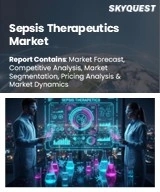
|
시장보고서
상품코드
1452450
항생제 시장 : 약제 클래스별, 유형별, 스펙트럼별, 약제 유래, 투여 경로별, 용도별, 유통 채널별, 예측(2024-2032년)Antibiotics Market - By Drug Class (Penicillins, Cephalosporins, Macrolides, Quinolones, Aminoglycosides, Tetracyclines), Type, Spectrum (Broad, Narrow), Drug Origin, Route of Administration, Application, Distribution Channel, Global Forecast 2024-2032 |
||||||
세계 항생제 시장은 2024년부터 2032년까지 복합 연간 성장률(CAGR) 3.3%를 나타낼 것으로 예측됩니다.
인구가 확대되고 도시화가 가속화됨에 따라 감염증의 위험이 높아지고 효과적인 항균제 치료에 대한 수요가 높아지고 있습니다. 유엔에 따르면 세계 인구는 2022년 11월 중순 80억 명에 이르며 향후 30년 동안 20억 명 가까이 증가할 것입니다.
게다가 항균제 내성이라는 근본적인 과제는 혁신적인 항균제에 대한 긴급한 필요성을 강조하고 있습니다. 특히 신흥경제국의 헬스케어 인프라 정비에 대한 주목의 고조는 세계 의료비 상승과 함께 항생제 수요를 증대시켜 시장을 견인하고 있습니다.
항생제 시장은 약물 클래스, 유형, 스펙트럼, 약물 기원, 투여 경로, 용도, 유통 채널, 지역에 따라 분류됩니다.
페니실린 시스템은 호흡기 감염에서 피부 감염까지 폭넓은 박테리아 감염에 효과가 있는 것으로 알려져 있으며, 2032년까지 왕성한 수요를 기록할 것으로 예측됩니다. 의료 처치나 수술의 진보에 수반해, 수술 후 감염증의 리스크가 급증하고 있기 때문에 페니실린계 항생제와 같은 예방,치료 목적의 항생제가 필요합니다. 새로운 제제의 지속적인 개발과 병용 요법의 도입은이 약물 클래스에 대한 수요를 증가시키고 있습니다.
제네릭 의약품은 비용 효과, 입수 용이성, 일부 브랜드 항생제의 특허 부족 등의 요인으로 인해 2032년까지 거액의 수익을 올릴 것으로 예상됩니다. 일반 항생제는 브랜드 항생제보다 저렴한 가격으로 입수할 수 있으므로 선진국 시장과 신흥국 시장에서 특히 매력적입니다. 게다가 엄격한 규제 당국의 승인과 품질 기준은 제네릭 항생제의 안전성과 효능을 보장하고 세계 보급을 더욱 강화하고 있습니다.
유럽의 항생제 시장 규모는 2032년까지 전염병의 높은 확산률, 확립된 의료 인프라, 항균제 내성 대책을 위한 정부의 강력한 이니셔티브 등의 요인에 의해 크게 확대됩니다. 이 지역의 국가들은 건강 관리를 선호하고 있으며 새로운 항생제 제제 및 치료법에 중점을 둔 R&D 활동에 대한 투자가 증가하고 있습니다. 또한 제약회사와 연구기관의 전략적 제휴가 세계 항생제 시장에서 이 지역의 우위에 기여하고 있습니다.
목차
제1장 조사 방법과 조사 범위
제2장 주요 요약
제3장 업계 인사이트
- 생태계 분석
- 업계에 미치는 영향요인
- 성장 촉진요인
- 감염증의 유행 증가
- 제약,바이오테크놀러지 기업 증가
- 항생제 개발에 있어서의 공동 연구 증가
- 제네릭 의약품에 대한 주목 증가
- 업계의 잠재적 위험 및 과제
- 항생제 내성
- 복잡한 규제
- 성장 촉진요인
- 성장 가능성의 분석
- 파이프라인 평가
- 규제 상황
- Porter's Five Forces 분석
- PESTEL 분석
제4장 경쟁 구도
- 소개
- 기업 매트릭스 분석
- 주요 시장 기업의 경쟁 분석
- 경쟁 포지셔닝 매트릭스
- 전략 대시보드
제5장 시장 추계 및 예측 : 약제 클래스별(2018년-2032년)
- 주요 동향
- 페니실린
- 세팔로스포린
- 마크로라이드
- 퀴놀론
- 아미노글리코시드
- 테트라 사이클린
- 기타 약제 클래스별
제6장 시장 추계 및 예측 : 유형별(2018년-2032년)
- 주요 동향
- 브랜드 의약품
- 제네릭 의약품
제7장 시장 추계 및 예측 : 스펙트럼별(2018년-2032년)
- 주요 동향
- 광역 항생제
- 협역 항생제
제8장 시장 추계 및 예측 : 약제 유래별(2018년-2032년)
- 주요 동향
- 천연
- 반합성
- 합성
제9장 시장 추계 및 예측 - 투여 경로별(2018년-2032년)
- 주요 동향
- 경구제
- 비경구
- 기타 투여 경로
제10장 시장 추계 및 예측 - 용도별(2018년-2032년)
- 주요 동향
- 호흡기 감염증
- 요로 감염(UTI)
- 피부,연부 조직 감염증
- 성감염증(STI)
- 소화기 감염증
- 기타 용도
제11장 시장 추계 및 예측 - 유통 채널별(2018년-2032년)
- 주요 동향
- 병원 약국
- 소매 약국
- 온라인 약국
제12장 시장 추계 및 예측 - 지역별(2018년-2032년)
- 주요 동향 :지역별
- 북미
- 미국
- 캐나다
- 유럽
- 독일
- 영국
- 프랑스
- 스페인
- 이탈리아
- 기타 유럽
- 아시아태평양
- 일본
- 중국
- 인도
- 호주
- 한국
- 기타 아시아태평양
- 라틴아메리카
- 브라질
- 멕시코
- 기타 라틴아메리카
- 중동 및 아프리카
- 남아프리카
- 사우디아라비아
- 기타 중동 및 아프리카
제13장 기업 프로파일
- Abbott Laboratories
- AbbVie, Inc.
- Allergan plc
- Basilea Pharmaceutica Ltd.
- Bayer AG
- Bristol Myers Squibb
- Cipla Inc.
- Daiichi Sankyo Company Ltd.
- Eli Lilly & Co.
- GlaxoSmithKline plc.
- Johnson & Johnson
- Lupin Inc.
- Melinta Therapeutics LLC
- Merck & Co.
- Novartis AG
- Pfizer Inc.
- Sandoz
- Sanofi
- Teva Pharmaceutical Industries Ltd.
- Viatris Inc.
The global antibiotics market is anticipated to record 3.3% CAGR from 2024 to 2032, owing to the escalating prevalence of infectious diseases worldwide.
As populations expand and urbanization accelerates, the risk of infectious outbreaks rises, necessitating heightened demand for effective antimicrobial treatments. According to the UN, the global population reached 8 billion in mid-November 2022 and will increase by nearly 2 billion people in the upcoming 30 years.
Additionally, the persistent challenge of antimicrobial resistance underscores the urgent need for innovative antibiotics. The increasing focus on healthcare infrastructure development, particularly in emerging economies, coupled with rising medical expenditure globally, amplifies the demand for antibiotics, driving the market forward.
The antibiotics market is classified based on drug class, type, spectrum, drug origin, route of administration, application, distribution channel, and region.
The penicillins segment is predicted to record strong demand by 2032, as they are known for their effectiveness against a wide range of bacterial infections, ranging from respiratory tract infections to skin infections. With the advancements in medical procedures and surgeries, the risk of postoperative infections has surged, necessitating antibiotics like penicillins for prophylactic and therapeutic purposes. The continuous development of novel formulations and the introduction of combination therapies bolster the demand for this drug class.
The generics type segment is expected to generate massive revenues by 2032, fueled by factors such as cost-effectiveness, ease of accessibility, and the expiration of patents for several branded antibiotics. Generic antibiotics offer a more affordable alternative to their branded counterparts, making them particularly attractive in both developed and developing markets. Additionally, stringent regulatory approvals and quality standards ensure the safety and efficacy of generic antibiotics, further driving their adoption globally.
Europe antibiotics market size will expand significantly through 2032 driven by factors such as a high prevalence of infectious diseases, well-established healthcare infrastructure, and strong government initiatives aimed at combating antimicrobial resistance. Countries across the region prioritize healthcare, leading to increased investments in R&D activities focused on novel antibiotic formulations and therapies. Furthermore, strategic collaborations between pharmaceutical companies and research institutions contribute to the region's prominence in the global antibiotics market.
Table of Contents
Chapter 1 Methodology & Scope
- 1.1 Market scope & definitions
- 1.2 Base estimates & calculations
- 1.3 Forecast calculation
- 1.4 Data collection
- 1.5 Data validation
- 1.6 Data sources
- 1.6.1 Primary
- 1.6.2 Secondary
- 1.6.2.1 Paid sources
- 1.6.2.2 Public sources
Chapter 2 Executive Summary
- 2.1 Industry 360 degree synopsis
Chapter 3 Industry Insights
- 3.1 Industry ecosystem analysis
- 3.2 Industry impact forces
- 3.2.1 Growth drivers
- 3.2.1.1 Increasing prevalence of infectious disease
- 3.2.1.2 Rising number of pharmaceutical and biotechnology companies
- 3.2.1.3 Growing collaborations for antibiotics development
- 3.2.1.4 Increasing focus on generic medications
- 3.2.2 Industry pitfalls & challenges
- 3.2.2.1 Antibiotic resistance
- 3.2.2.2 Regulatory complexities
- 3.2.1 Growth drivers
- 3.3 Growth potential analysis
- 3.4 Pipeline assessment
- 3.5 Regulatory landscape
- 3.6 Porter's analysis
- 3.6.1 Supplier power
- 3.6.2 Buyer power
- 3.6.3 Threat of new entrants
- 3.6.4 Threat of substitutes
- 3.6.5 Industry rivalry
- 3.7 PESTEL analysis
Chapter 4 Competitive Landscape, 2023
- 4.1 Introduction
- 4.2 Company matrix analysis
- 4.3 Competitive analysis of major market players
- 4.4 Competitive positioning matrix
- 4.5 Strategic dashboard
Chapter 5 Market Estimates and Forecast, By Drug Class, 2018-2032 ($ Million)
- 5.1 Key trends
- 5.2 Penicillins
- 5.3 Cephalosporins
- 5.4 Macrolides
- 5.5 Quinolones
- 5.6 Aminoglycosides
- 5.7 Tetracyclines
- 5.8 Other drug classes
Chapter 6 Market Estimates and Forecast, By Type, 2018 - 2032 ($ Million)
- 6.1 Key trends
- 6.2 Branded
- 6.3 Generics
Chapter 7 Market Estimates and Forecast, By Spectrum, 2018 - 2032 ($ Million)
- 7.1 Key trends
- 7.2 Broad-spectrum antibiotics
- 7.3 Narrow-spectrum antibiotics
Chapter 8 Market Estimates and Forecast, By Drug Origin, 2018 - 2032 ($ Million)
- 8.1 Key trends
- 8.2 Natural
- 8.3 Semisynthetic
- 8.4 Synthetic
Chapter 9 Market Estimates and Forecast, By Route of Administration, 2018 - 2032 ($ Million)
- 9.1 Key trends
- 9.2 Oral
- 9.3 Parenteral
- 9.4 Other routes of administration
Chapter 10 Market Estimates and Forecast, By Application, 2018 - 2032 ($ Million)
- 10.1 Key trends
- 10.2 Respiratory infections
- 10.3 Urinary tract infections (UTIs)
- 10.4 Skin and soft tissue infections
- 10.5 Sexually transmitted infections (STIs)
- 10.6 Gastrointestinal infections
- 10.7 Other applications
Chapter 11 Market Estimates and Forecast, By Distribution Channel, 2018 - 2032 ($ Million)
- 11.1 Key trends
- 11.2 Hospital pharmacies
- 11.3 Retail pharmacies
- 11.4 Online pharmacies
Chapter 12 Market Estimates and Forecast, By Region, 2018 - 2032 ($ Million)
- 12.1 Key trends, by region
- 12.2 North America
- 12.2.1 U.S.
- 12.2.2 Canada
- 12.3 Europe
- 12.3.1 Germany
- 12.3.2 UK
- 12.3.3 France
- 12.3.4 Spain
- 12.3.5 Italy
- 12.3.6 Rest of Europe
- 12.4 Asia Pacific
- 12.4.1 Japan
- 12.4.2 China
- 12.4.3 India
- 12.4.4 Australia
- 12.4.5 South Korea
- 12.4.6 Rest of Asia Pacific
- 12.5 Latin America
- 12.5.1 Brazil
- 12.5.2 Mexico
- 12.5.3 Rest of Latin America
- 12.6 Middle East & Africa
- 12.6.1 South Africa
- 12.6.2 Saudi Arabia
- 12.6.3 Rest of Middle East & Africa
Chapter 13 Company Profiles
- 13.1 Abbott Laboratories
- 13.2 AbbVie, Inc.
- 13.3 Allergan plc
- 13.4 Basilea Pharmaceutica Ltd.
- 13.5 Bayer AG
- 13.6 Bristol Myers Squibb
- 13.7 Cipla Inc.
- 13.8 Daiichi Sankyo Company Ltd.
- 13.9 Eli Lilly & Co.
- 13.10 GlaxoSmithKline plc.
- 13.11 Johnson & Johnson
- 13.12 Lupin Inc.
- 13.13 Melinta Therapeutics LLC
- 13.14 Merck & Co.
- 13.15 Novartis AG
- 13.16 Pfizer Inc.
- 13.17 Sandoz
- 13.18 Sanofi
- 13.19 Teva Pharmaceutical Industries Ltd.
- 13.20 Viatris Inc.



















